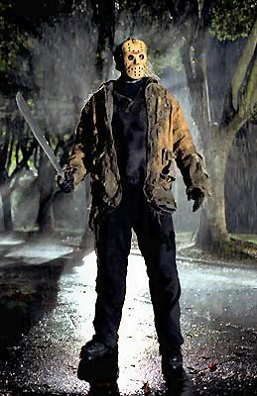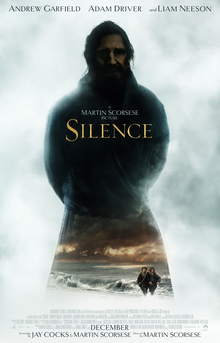The Joker is possibly the most iconic comic book villain of all time. He has been played five times now in live-action television and film since 1966, each interpretation improving upon the previous rendition until that unfortunate thing Jared Leto did in 2016. I was a little apprehensive about a live action Joker origin movie because DC universe flicks have been unimpressive over the past few years and casting has been a major part of the problem. But with Joaquin Phoenix reprising the role, all concerns can be laid to rest. Joker is its own movie not to be conflated with other recent DCU film adaptations, and fortunately it shows.
[WARNING: SPOILERS AHEAD]
As the film opens, it’s 1981. Arthur Fleck is sitting in front of a mirror putting on his clown makeup. He’s one of a half-dozen rent-a-clowns shown working for the Haha company to be farmed out for meager gigs. A broadcaster can be heard on the radio reporting the dismal state of Gotham City and the overflow of litter in the streets. Arthur is a sad case, trying to force a smile in the mirror, bewildered by his own misery.
Phoenix gets lost in the character of Arthur, bringing him to life. He’s a proto-Joker based loosely off the Batman: The Killing Joke graphic novel, but more pathetic. He’s a tragic character going through a sad transformation. He lives with his mom in a rundown urban apartment building. He doesn’t have a girlfriend, or any friends to speak of and he never gets any mail. It seems he may as well not even exist. But he does exist and he has to live with himself every day.
Arthur has an unspecified mental disorder causing him to have inappropriate and excessive emotional reactions. He has been seeking treatment from a publicly funded therapist, and even she is little more than a detached bureaucrat just putting in the time but not the effort to see Arthur’s individuality or pay attention to him. A couple scenes later we learn that the City of Gotham is pulling funding for the service and Arthur is going to lose access to his seven different medications. Arthur feels abandoned, rejected. The realization he’s coming to is communicated without sacrificing anything for poetry when his therapist exclaims “they don’t give a shit about people like you.”
Arthur is bullied and ostracized, and he’s not socially or psychologically equipped to deal with his challenges. He is faced with so little respect or empathy that even when he is assaulted and mugged on the street by a roving gang of teens who steal and destroy the sign he was hired to wave, his boss holds him responsible for the loss. When his coworker Randall pushes him to take a gun for protection he feebly tries to refuse and then winds up dropping it at another gig resulting in his being fired. Randall lies to the boss saying Arthur had pressured him for a gun.
Arthur is trying to function in the world, but he just can’t seem to make it work. Being a fan of comedy, he tries his hand at standup only to bomb miserably and to become the object of public mockery when a clip of his performance is played on the Murray Franklin Show, a late night television talk show hosted by a comedian (Robert De Nero) Arthur has admired for years.
When Arthur is assaulted again on the subway by three “wall street guys” and this time pulls out the revolver and blows two of them away it’s a bit sympathetic. After all, the only people he’s harmed so far were handled in self-defense. Then he pursues the third culprit into the station, and shoots him in the back. This is the moment the Joker begins to emerge as Arthur is shortly afterward seen dancing joyfully in celebration. Even he is surprised how easily killing comes to him without any remorse. Over the course of the movie Arthur descends further into violet retribution against the people he perceives have wronged him.
Arthur kills his mother when he discovers that she has lied to him about his father, and his past, and allowed him to be abused as a child by one of her lovers. He later kills Randall for lying about him. Then when he is invited on the Murray Franklin Show to talk about the clip of his embarrassing performance at the comedy club he chooses this moment to reveal himself to the world as Joker. He confesses his murders on the air and makes an impassioned speech about the world’s injustice, and how rich, out of touch elites like Murray Franklin are the problem just before shooting the host in the head, killing him.
Joker is about a man that an increasingly dysfunctional society not only has no use for, but openly disdains. He has a very tenuous grasp on reality, is unable to function or communicate effectively and he is floundering in a state of failure with no one to lean on for support. Media ridicules his genuine attempts to succeed and be accepted while news headlines sensationalize the murderous clown on the loose causing protesters against Gotham’s elite to adopt clown masks the way Guy Fawkes masks have been adopted in the modern world. It doesn’t take long for Arthur’s fragile mind to see where his recognition and validation will more easily be found.
I love that Todd Phillips dispensed with the classic story of Joker’s origin as a villain falling into a vat of chemicals and emerging with green hair, white skin and red lips, and instead chose a story of a troubled man working as a clown, struggling as a comedian who descends into murder and crime. Even as a child I’ve always found the chemical origin silly. This idea that Joker was a professional clown before his criminal career makes a more believable story with more depth to the character. This could really happen. Initially I was less than enthusiastic about the makeup rendering a distinctly classic clown appearance complete with a red nose instead of just resembling a clown as Joker has always been portrayed, but as the character develops this look quickly becomes the face of Joker.
Unlike a lot of superhero universe movies, Joker didn’t require a lot of special effects or CGI to keep it interesting. There were no muscle-bound heroes dominating the screen. In fact it was the complete opposite. Phoenix plays a scrawny, sickly looking character, having lost a remarkable 52 pounds for the role.
Joker is darker than most comic book movies, but the Batman universe usually is. It alternates between gloomy, funny, and tense, providing a range of emotional experience manipulating your perceptions along the way. Sometimes we’re not quite sure who the good guys are and who the bad guys are, just like Joker himself, and we share in his insanity during the show. It seems a fair amount of the story may be nothing more than Arthur’s delusion anyway. We can never be too certain what reality actually is.
Now to the big question that every fan will be talking about; where does Phoenix rank up next to the other live action Jokers? The truth is for me it’s hard to say. The movie is about Arthur Fleck who over the length of the story becomes the Joker. The actual Joker gets very little screen time, and we never get to see the fully developed criminal mastermind that the Joker is known to be. It’s difficult to compare this Joker to the screen time of Ledger’s or Nicholson’s Joker. The character of Arthur Fleck becoming the Joker is however performed amazingly, and the few minutes we get to see the Joker realized is full of promise. I would bet if a sequel is produced Phoenix would give Ledger a run for his money.
To put it simply for me, Joker is the best film of 2019, and one of the best superhero universe films ever.







 Solo: A Star Wars Story opened this month and everyone who has seen it has an opinion about it. Here is mine.
Solo: A Star Wars Story opened this month and everyone who has seen it has an opinion about it. Here is mine.
